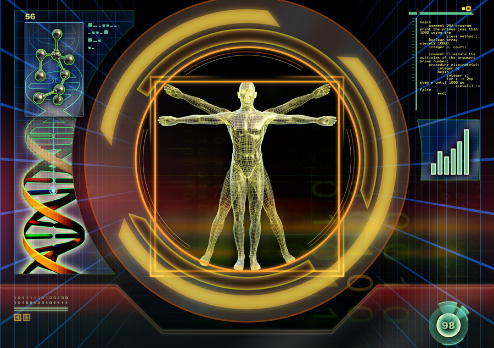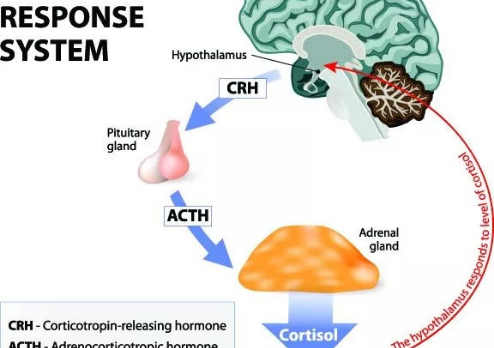
Evolution has provided us with lots of survival mechanisms. They can be roughly divided into two functional categories: Growth and Protection.
These opposing movements define the two basic cellular responses to environmental stimuli:
- Gravitating to a life-sustaining signal, such as nutrients, characterizes a growth response;
- Moving away from threatening signals, such as toxins characterizes a protection response.
The body is actually endowed with two separate protection systems, each vital to the maintenance of life. The first is the system that mobilizes protection against external threats. It is called the HPA axis, which stands for the Hypothalamus-Pituitary-Adrenal Axis.
When there are no threats, the HPA axis is inactive and growth flourishes. However, when the brain's hypothalamus perceives and environmental threat, it engages the HPA axis by sending a signal to the pituitary gland, the "Master Gland," which is responsible for organizing the fifty trillion cells of the community to deal with the impending threat.
The body's second protection system is the Immune System, which protects us from threats originating under the skin, such as those caused by bacteria and viruses. When the immune system is mobilized, it can consume much of the body's energy supply. To get a sense of how much energy the immune system expends, recall how physically weak you become when you are fighting infections such as a flu or a cold. Many of us have experienced depleted immune function during the current pandemic.
When the HPA axis mobilizes the body for fight or flight response, the adrenal hormones directly repress the action of the immune system to conserve energy reserves. In fact, stress hormones are so effective at curtailing immune system function that doctors provided them to recipients of transplants so that their immune systems would not reject the foreign tissues.

Why would the adrenal system shut down the immune systems?
Imagine that you are in your tent on the African savannah suffering from a bacterial infection and experiencing a bad case of diarrhea. You hear the gutty growl of a lion outside your tent. The brain must make a decision about which is the greater threat. It will do your body no good to conquer the bacteria if you let a lion maul you. So your body halts the fight against the infection in favor of mobilizing energy for flight to survive your close encounter with a lion. Therefore, a sec¬ondary consequence of engaging the HPA axis is that it interferes with our ability to fight disease.
The problem is that your autonomic nervous system does not know the difference between the stress you feel as you see an oncoming car driving in your lane, and other stressors like taking a test in school; having an argument with your partner; worrying about your child making unwise life decisions, or panic about the latest pandemic. Each of these stressors and many more shift your body’s resources away from what you need most during a pandemic: a strong immune system.